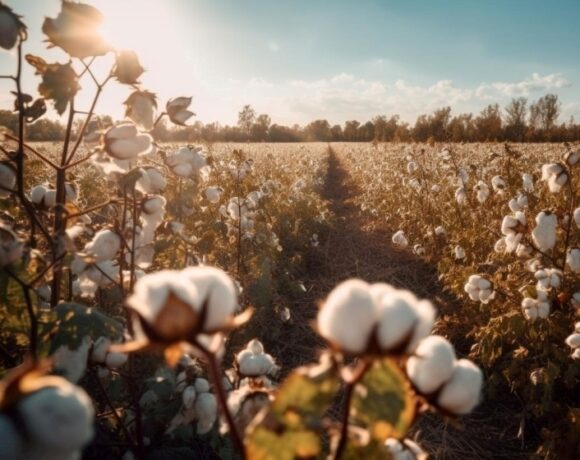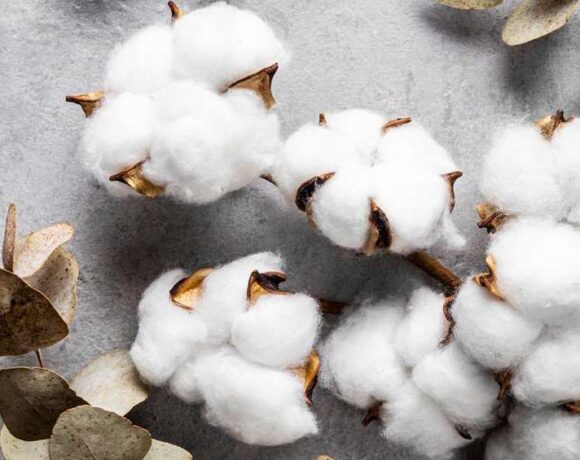China And India Lead Global Cotton Production, But Market Faces Diverging Trends

The latest U.S. Department of Agriculture (USDA) cotton projections for the 2024/25 season (August–July) indicate an increase in global cotton ending stocks, expected to rise by 1.8 million bales (2.4 percent) from the previous year to 77.6 million bales. This growth in stocks is attributed to a production increase that outpaces the rise in mill use. Consequently, with world cotton stocks anticipated to reach their highest level in five years, global cotton prices are projected to decline for a third consecutive year in 2024-25.
Global cotton production is estimated to increase by 4.1 million bales (3.6 per cent) from the previous year, reaching 117.6 million bales, marking the highest production since the 2019-20 season. The United States and Brazil are the major contributors to this global production gain. At the same time, world cotton mill use is projected to expand by 3.9 million bales (3.4 per cent) to 116.2 million bales. All five major cotton-spinning countries are expected to see gains in mill use during this period. However, global cotton trade expectations have declined slightly to 43.5 million bales, mainly due to a significant reduction in China’s import demand for 2024-25.
U.S. Cotton Market Outlook
Domestically, the U.S. cotton crop forecast for 2024-25 has been reduced but remains the highest in three years. The USDA’s first survey-based estimate for the 2024-25 U.S. cotton crop is 15.1 million bales, which is 11 per cent below the previous month’s projection but 25 per cent above the last season’s final estimate of 12.1 million bales. The 2024 cotton planted area estimate stands at nearly 11.2 million acres, reflecting a 9 per cent increase from the 2023/24 season due to more favourable cotton prices relative to other crops heading into the planting season.
Improved moisture conditions across much of Texas, the largest cotton-producing state, have led to a lower early-season U.S. abandonment projection compared to the previous year. The U.S. abandonment rate for 2024-25 is projected at 23 per cent, a significant decrease from last year’s rate and less than half of the record 47 per cent abandonment rate for 2022-23. U.S. cotton harvested acreage is forecast at 8.6 million acres, the highest in three years, with a projected yield of 840 pounds per harvested acre, 50 pounds below the three-year average.
Regional Production Insights
The U.S. upland cotton production for 2024-25 is forecast at approximately 14.6 million bales, a 24 per cent increase from 2023-24, and the largest crop since the 2021-22 season. Regional production expectations are higher for three of the Cotton Belt regions compared to last year, while the Southeast is forecast to have a production level nearly identical to 2023-24. In the Southwest, upland cotton production is projected at 5.1 million bales, the third lowest in a decade, but above the drought-reduced crops of the previous two seasons. The Delta’s 2024-25 cotton crop is estimated at nearly 4.7 million bales, exceeding both last season’s total and the five-year average. In contrast, the Southeast’s production is projected at 4.3 million bales, similar to last season but below the five-year average. The West is estimated to see an increase in upland production to 445,000 bales after a significant rebound in harvested area and yield.
U.S. Cotton Demand and Stocks
The USDA has revised U.S. cotton demand and stock estimates for 2024-25 and 2023-24 based on the latest available data. U.S. exports for 2024-25 are forecast at 12.0 million bales, 1.0 million below the July projection but slightly above the previous year, largely due to a reduced crop estimate and decreased import prospects from China. U.S. cotton mill use is projected at 1.9 million bales in 2024-25, unchanged from July but slightly above the previous year. With U.S. cotton production expected to exceed demand in 2024-25, ending stocks are projected to increase to 4.5 million bales, 43 per cent above the beginning level and the highest in five years. The stocks-to-use ratio is forecast at 32 per cent, the largest since 2019-20.
International Cotton Market Trends
Globally, cotton production for 2024-25 is forecast at 117.6 million bales, about 3.5 per cent above the previous year and 2 per cent above the five-year average. Production gains in the United States and Brazil are largely responsible for this increase, despite declines in India and Pakistan. China and India remain the leading cotton producers, accounting for 23 per cent and 21 per cent of global production, respectively. However, India’s production is expected to decrease by 6.5 per cent from 2023-24 due to lower area and yield forecasts.
Brazil’s production is estimated to increase by approximately 14.5 per cent over the previous year, reaching a record 16.7 million bales. Conversely, Pakistan’s cotton production is expected to decline by 10 per cent to 6.0 million bales due to a significant reduction in harvested area. Australia’s cotton production is projected to remain unchanged at 5.0 million bales, with an increase in harvested area offset by a lower yield.
Global Cotton Mill Use and Trade
World cotton mill use in 2024-25 is projected to rise modestly to 116.2 million bales, nearly 3.5 per cent above the 2023-24 revised estimate and the highest in four years. Stable global economic growth and lower cotton fibre prices are expected to support this increase. However, global cotton trade is forecast to decline slightly to 43.5 million bales, primarily due to reduced import demand from China. Despite this, most major importing countries, excluding China, are expected to experience higher imports.
Global cotton ending stocks for 2024-25 are projected to increase to 77.6 million bales, marking the highest level in five years. This increase in stocks is a result of higher global production surpassing demand, leading to a continued decline in cotton prices for the third consecutive year.















